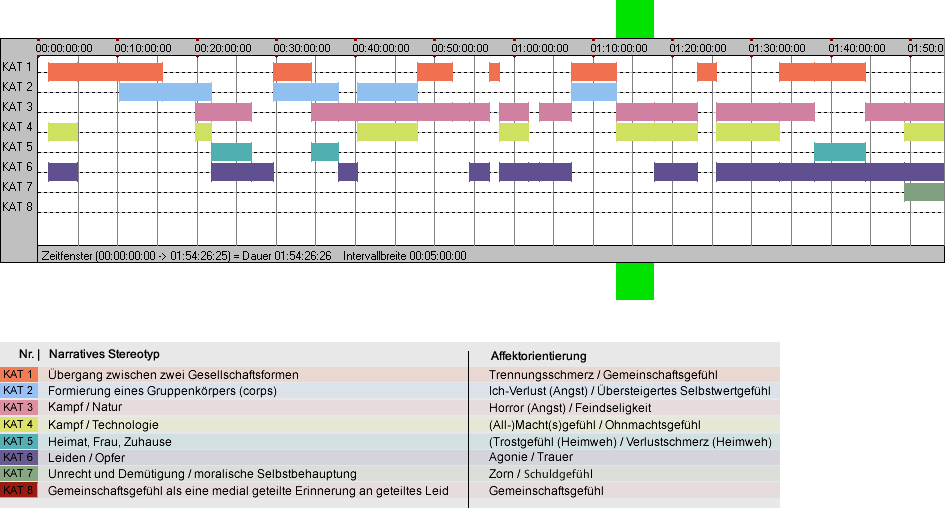Battle and failed flight*
Classification in categories
- Battle and nature
- Battle and technology
Please enable JavaScript in Your browser.


Metadata
Movie: Bataan*
Number: 20
Individual analysis: Bataan*
Timecode start: 01:12:59:13
Timecode end: 01:17:40:25
Year of origin: 1943
In the film’s dramaturgical structure this scene follows Dane’s exhaustion and is followed by the Lieutenant's sacrifice. Number: 20
Individual analysis: Bataan*
Timecode start: 01:12:59:13
Timecode end: 01:17:40:25
Year of origin: 1943
The sound design proves to be the dominant level of the staging. It is related to a space created by, sequentially, framing, camera movement and editing. This relationship – the scene’s dynamic pattern – is characterized by a precise sequence of building tension, a highpoint that unfolds on the acoustic level, and discontinuation. The hushed dialogue in the first EMU is ended in the course of EMU 2. The silence clearly marks the acoustic level so that a rhythmization can take place on this level in EMU 3 (hammering). This acoustic arc accompanies the pressure to create more dynamic that is staged on the spatial level. The tension between the fixed frame and the figures (Dane and the Lieutenant) tense posture in a group portrait at the beginning (>EMU 1); a tracking shot that both marks and suspends a line of movement as a horizontal line in the frame's depths (the soldiers at their positions - >EMU 2); and finally the editing that, by repeating close ups of the characters acts like a wind-up mechanism and stages the tension of waiting (>EMU 3). The sound of hammering marks the temporality of the tension on the acoustic level.
The unfolding of the dynamics after these preparations is the zenith of the scene and is staged accordingly by the sound design. It takes place as an interplay of expanding explosions (the muzzle flash of machine gun volleys) through the editing and the increasing volume. The abruptly increasing volume is decreased just as quickly and there is a change in staging which ends the scene: the now quieter image space concentrates on the movement of a facial expression, centering on Feingold’s face (>EMU 4).
The scene’s affective arc goes through all stages from tension to (unfolding on the level of sound design) triumph. The quieter image space thus corresponds with a return to an earlier affective level: triumph is followed by fearful expectation, staged in facial expressions. ML
Expressive movement units
01 02 03 04Materials about the scene
Position of the scene in the film





